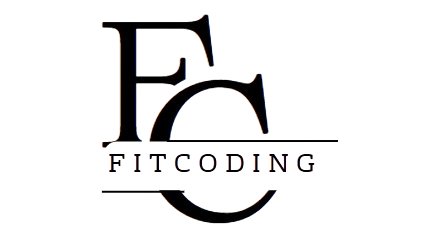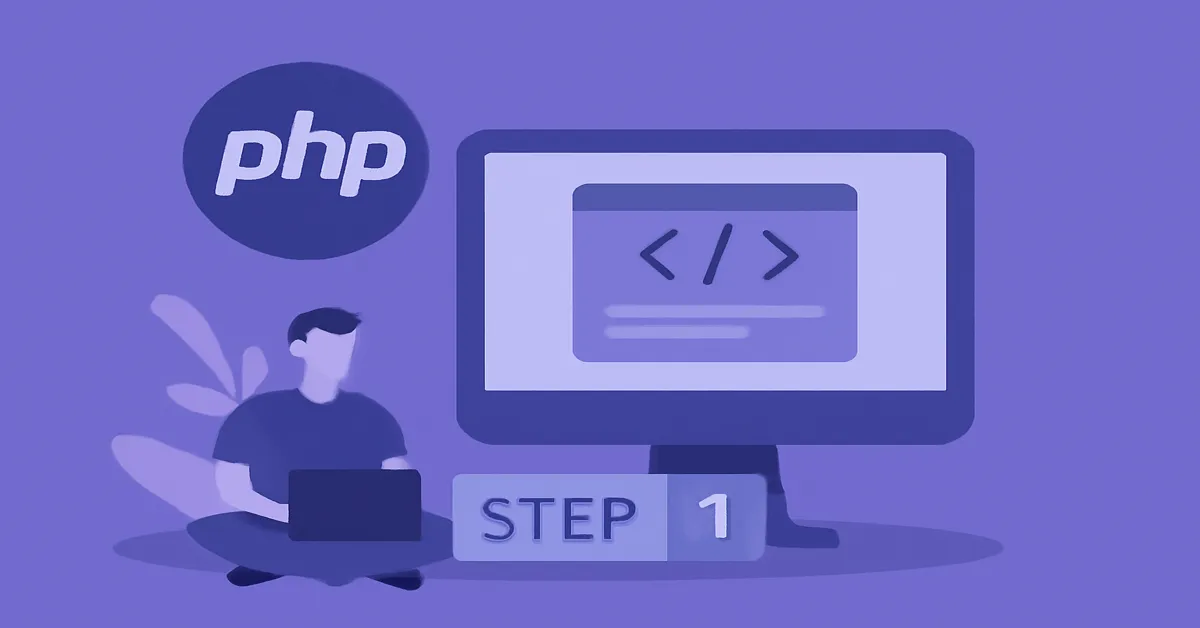The digital landscape today is fueled by dynamic, data-driven web applications. These applications require robust backend technologies to process requests, handle data, and manage user interactions. One of the most widely used programming languages for building such applications is PHP (Hypertext Preprocessor). Over the years, PHP has maintained its popularity because of its simplicity, ease of learning, and versatility, making it an excellent starting point for beginners in web development – Learn PHP.
However, like any programming language, the journey to mastering PHP can seem daunting. Where do you start? How do you ensure that the foundation you build will set you up for success in developing dynamic, server-side applications? The first step to learning PHP programming is critical, as it establishes the ground rules for future development and learning – Learn PHP.
This article serves as your first step to learning PHP, laying out the essential foundations of what you need to know before you start writing code. Whether you’re just starting or looking to refine your existing skills, this guide will help you navigate the initial challenges of learning PHP and set you on a path toward becoming proficient in the language.
Section 1: Understanding PHP’s Role in Web Development
Before diving into writing PHP code, it’s essential to understand its role and importance in the world of web development. PHP is primarily used as a server-side scripting language, meaning it runs on a web server, processes user requests, communicates with databases, and generates dynamic content. The output of PHP is typically HTML, CSS, or JavaScript, which is sent to the user’s browser.
PHP can be embedded directly into HTML, which makes it incredibly versatile for web developers. When a user requests a page, PHP is executed on the server, and the resulting content is sent back to the client. Unlike client-side languages such as JavaScript, which execute on the user’s device, PHP runs on the server, allowing it to handle complex tasks such as – Learn PHP:
- Managing sessions and user authentication
- Handling form submissions and database interactions
- Generating dynamic content based on user requests
The power of PHP lies in its ability to integrate seamlessly with databases, such as MySQL or PostgreSQL, to fetch, manipulate, and display data. As a result, PHP has become an essential tool for building content management systems (CMS) like WordPress, Joomla, and Drupal, as well as e-commerce platforms like Magento and PrestaShop.
Section 2: Preparing Your Development Environment
2.1 Setting Up PHP Locally: The Tools You Need
The first step to learning PHP is ensuring you have the correct tools installed on your computer. You’ll need a local development environment where you can write, test, and execute PHP code. This environment includes several key components:
- PHP: The language itself.
- Web server (Apache or Nginx): This server will handle HTTP requests.
- Database (MySQL or MariaDB): For storing and managing data.
- Text editor or IDE (Integrated Development Environment): For writing and editing your PHP code.
Most beginners opt for XAMPP or MAMP, which are easy-to-install packages that bundle PHP, Apache, and MySQL together. These tools make it simple to set up a local development environment for PHP without having to manually configure each component.
Steps to Set Up XAMPP (for Windows, macOS, and Linux)
- Download XAMPP: Go to the official XAMPP website and download the version appropriate for your operating system.
- Install XAMPP: Follow the on-screen instructions to install the package. The installation process will install PHP, Apache, and MySQL.
- Start XAMPP: Once installed, open the XAMPP Control Panel and start the Apache and MySQL servers.
- Check PHP Installation: Open your browser and type
localhostin the address bar. If you see the XAMPP dashboard, the installation was successful.
Once your local development environment is set up, you can start creating PHP files and testing them locally without the need for an internet connection or live server.
2.2 Setting Up a Code Editor
A good code editor or IDE is crucial for writing clean, efficient PHP code. While you can use any text editor, such as Notepad (Windows) or TextEdit (macOS), it’s better to use a code editor that offers features like syntax highlighting, code completion, and debugging tools.
Some popular code editors and IDEs for PHP include:
- Visual Studio Code (VSCode): A lightweight yet powerful editor with excellent extensions for PHP development.
- PHPStorm: A commercial IDE designed specifically for PHP, with features like auto-completion, error detection, and seamless integration with databases.
- Sublime Text: A fast, minimalistic editor with strong support for PHP through plugins.
- Atom: A customizable, open-source editor with support for PHP and many other languages.
VSCode is one of the most popular choices for PHP development due to its flexibility, vast extension library, and free availability.
Section 3: Writing Your First PHP Script
3.1 Your First PHP Program
Now that your development environment is ready, it’s time to write your first PHP script! A basic PHP script often starts with the <?php opening tag and ends with the ?> closing tag. Inside these tags, you write your PHP code.
Here’s an example of a very simple PHP script that outputs a message to the browser:
phpCopy<?php
echo "Hello, world!";
?>
To test this:
- Create a new file named
index.phpin thehtdocsfolder (if using XAMPP). - Write the above code inside the file.
- Open your browser and navigate to
http://localhost/index.php. - You should see the message “Hello, world!” displayed on the screen.
3.2 Understanding PHP Syntax and Basic Structure
At its core, PHP is a relatively simple language to learn. The basic building blocks of PHP programming include:
- Variables: Declared with a dollar sign (
$), variables store data. For example: phpCopy$name = "John Doe"; echo $name; // Output: John Doe - Comments: Comments are added to your code to explain what it does, making it easier to read and maintain. You can write single-line comments with
//and multi-line comments with/* */. phpCopy// This is a single-line comment /* This is a multi-line comment */ - Data Types: PHP supports a variety of data types such as strings, integers, floats, and arrays. For example: phpCopy
$age = 25; // Integer $height = 5.9; // Float $name = "Alice"; // String - Control Structures: Just like other programming languages, PHP uses control structures like
if,else,while, andforto control the flow of execution. phpCopyif ($age >= 18) { echo "Adult"; } else { echo "Minor"; }
Section 4: Essential PHP Concepts to Learn Next
4.1 Functions in PHP
Once you’re comfortable with the basics, the next step is to learn about functions. Functions in PHP allow you to group code into reusable blocks. Here’s an example of how to define and call a simple function:
phpCopy<?php
function greet($name) {
return "Hello, " . $name;
}
echo greet("John"); // Output: Hello, John
?>
Understanding how to create and use functions will help you avoid redundancy in your code and make it easier to maintain.
4.2 Working with Forms and User Input
One of the most common uses of PHP is processing form data. HTML forms are used to collect user input, and PHP can process and display that input. For example:
phpCopy<!-- HTML form -->
<form method="POST" action="process.php">
Name: <input type="text" name="username">
<input type="submit" value="Submit">
</form>
<!-- PHP processing script (process.php) -->
<?php
if ($_SERVER["REQUEST_METHOD"] == "POST") {
$username = $_POST['username'];
echo "Hello, " . $username;
}
?>
This script collects the user’s name via a form and displays a personalized message when the form is submitted.
4.3 Introduction to PHP and MySQL
As you progress, you’ll need to learn how to interact with databases, which is essential for most dynamic web applications. PHP’s compatibility with MySQL makes it an excellent choice for working with databases. Here’s a basic example of how to connect to a MySQL database:
phpCopy<?php
$servername = "localhost";
$username = "root";
$password = "";
$dbname = "testdb";
// Create connection
$conn = new mysqli($servername, $username, $password, $dbname);
// Check connection
if ($conn->connect_error) {
die("Connection failed: " . $conn->connect_error);
}
echo "Connected successfully";
?>
From here, you can perform operations like inserting, selecting, updating, and deleting records from the database using SQL queries.
Section 5: The Path Forward
Learning PHP is just the first step in becoming a proficient web developer. Once you are comfortable with the basics, you can expand your knowledge to more advanced topics, such as:
- Object-Oriented Programming (OOP) in PHP
- Building RESTful APIs
- Frameworks like Laravel and Symfony
- Security practices for PHP (SQL injection prevention, data sanitization)
- Deployment and cloud hosting for PHP applications
Conclusion
The journey to mastering PHP programming starts with understanding its role in web development, setting up the right tools, and learning the basic syntax. From there, you can gradually build more complex applications, learn how to interact with databases, and eventually dive into modern PHP frameworks that can enhance your productivity – Learn PHP.
By following this step-by-step guide, you’re laying the foundation for a rewarding career in web development. Continue practicing, building, and learning, and PHP will be a powerful tool in your programming toolkit – Learn PHP.
Happy coding!
Read:
The History of PHP: From Humble Beginnings to Web Development Dominance
FAQs
1. How do I set up PHP on my computer for the first time?
Answer: To set up PHP, you can install a local development environment like XAMPP or MAMP, which includes PHP, Apache, and MySQL. These packages make it easy to run PHP code locally on your machine.
2. What is the simplest way to write and test my first PHP code?
Answer: Start by creating a file with the .php extension (e.g., index.php) and add PHP code inside the <?php and ?> tags. Save the file in your web server’s root directory and access it by navigating to http://localhost/filename.php in your browser.
3. What is the role of PHP in web development?
Answer: PHP is a server-side scripting language used to create dynamic web pages. It processes user requests, communicates with databases, and outputs dynamic HTML, making it essential for tasks like managing user authentication, handling forms, and generating content.
4. What are some common uses of PHP in web development?
Answer: PHP is used for building content management systems (CMS) like WordPress, e-commerce websites, dynamic blogs, and user authentication systems. It is also widely used for creating RESTful APIs and managing form data submissions.
5. Is it necessary to learn databases for PHP development?
Answer: Yes, learning how to work with databases like MySQL is crucial for PHP development. PHP often interacts with databases to store, retrieve, and manipulate data, which is fundamental for creating dynamic web applications.











